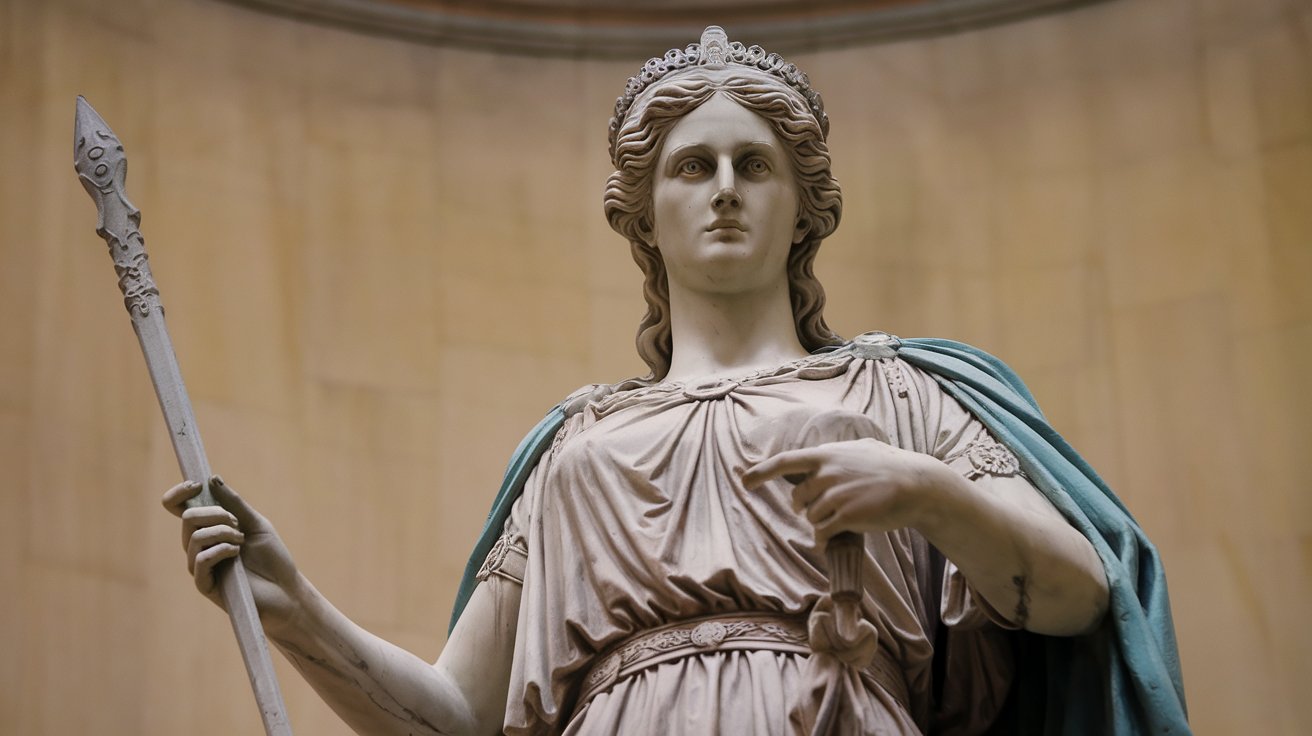
Cultural practices shape our world in countless ways, influencing how people live, celebrate, and interact. Ever wondered why some cultures greet with a bow while others shake hands? Or why certain festivals involve colorful parades and others solemn rituals? Understanding cultural practices not only broadens our horizons but also fosters empathy and respect for diverse traditions. From Japan's tea ceremonies to Mexico's Day of the Dead, each practice tells a unique story. Curious about the quirks and customs that make cultures distinct? Let's dive into 34 fascinating facts that highlight the rich tapestry of human traditions across the globe.
Key Takeaways:
- Cultural practices from around the world, such as festivals, clothing, rituals, and dining customs, offer a fascinating glimpse into the diverse ways people live and celebrate their unique identities.
- Marriage customs, funeral traditions, and social customs vary widely across cultures, reflecting deep-seated beliefs and values, and offering insight into how different societies view important life events.
Cultural Practices Around the World
Cultural practices shape societies and give them unique identities. From rituals to daily habits, these traditions offer a glimpse into the diverse ways people live. Here are some fascinating facts about cultural practices from different corners of the globe.
Unique Festivals
Festivals often reflect the heart and soul of a culture. They bring communities together and celebrate shared values and beliefs.
- Holi: Known as the Festival of Colors, Holi is celebrated in India and Nepal. People throw colored powders at each other, symbolizing the arrival of spring and the victory of good over evil.
- La Tomatina: In Buñol, Spain, participants engage in a massive tomato fight. This festival is held annually on the last Wednesday of August.
- Day of the Dead: In Mexico, families honor deceased loved ones with altars, marigolds, and sugar skulls. Celebrated on November 1st and 2nd, it’s a time for remembrance and festivity.
- Carnival of Venice: Famous for its elaborate masks, this Italian festival dates back to the 12th century. It’s a celebration of art, culture, and history.
- Songkran: Thailand’s New Year festival involves water fights and cleansing rituals. It’s believed that water washes away bad luck and sins.
Traditional Clothing
Clothing often signifies cultural identity and heritage. Traditional attire can tell stories of history, geography, and social status.
- Kimono: In Japan, the kimono is a traditional garment worn on special occasions. It’s known for its intricate designs and craftsmanship.
- Sari: Worn by women in India, the sari is a long piece of cloth draped elegantly around the body. It’s both a fashion statement and a cultural symbol.
- Kilt: In Scotland, the kilt is a knee-length skirt-like garment with pleats at the back. It’s traditionally worn by men and is often associated with Scottish clans.
- Dashiki: This colorful garment is worn in West Africa. It’s loose-fitting and often decorated with intricate patterns.
- Hanbok: In Korea, the hanbok is traditional attire characterized by vibrant colors and simple lines. It’s worn during festivals and celebrations.
Unique Rituals
Rituals are an integral part of many cultures. They can mark important life events or seasonal changes.
- Tea Ceremony: In Japan, the tea ceremony is a ritualistic preparation of matcha tea. It emphasizes harmony, respect, purity, and tranquility.
- Coming of Age: In various cultures, coming-of-age ceremonies mark the transition from childhood to adulthood. In Latin America, a Quinceañera celebrates a girl’s 15th birthday.
- Firewalking: Practiced in countries like India, Greece, and Fiji, firewalking involves walking barefoot over hot coals. It’s often a test of faith and endurance.
- Scarification: In some African tribes, scarification is a rite of passage. It involves making deliberate cuts on the skin to create permanent scars.
- Sky Burial: In Tibet, sky burials involve placing the deceased on a mountaintop to be consumed by vultures. It’s a practice rooted in Buddhist beliefs about the cycle of life.
Food and Dining Customs
Food is a universal language, but dining customs vary widely across cultures. These practices can reveal much about a society’s values and traditions.
- Ethiopian Injera: Injera is a sourdough flatbread that serves as both a plate and a utensil. Diners use it to scoop up various stews and dishes.
- Chinese Banquets: In China, banquets are elaborate affairs with multiple courses. It’s customary to toast frequently and leave some food on your plate to show abundance.
- French Cheese Course: In France, cheese is often served after the main course but before dessert. It’s a way to cleanse the palate and enjoy a variety of flavors.
- Japanese Kaiseki: Kaiseki is a traditional multi-course meal in Japan. It emphasizes seasonal ingredients and meticulous presentation.
- Moroccan Tagine: Tagine is both a dish and the pot it’s cooked in. Meals are often communal, with everyone eating from the same dish.
Marriage Customs
Marriage customs can vary dramatically from one culture to another. These practices often reflect deep-seated beliefs and traditions.
- Indian Baraat: In Indian weddings, the groom arrives on a horse or elephant, accompanied by a procession of dancing and music. It’s a lively and colorful event.
- Jewish Breaking of the Glass: At the end of a Jewish wedding ceremony, the groom breaks a glass with his foot. This symbolizes the fragility of life and the destruction of the Temple in Jerusalem.
- Maasai Jumping Dance: In Kenya, Maasai warriors perform a jumping dance during wedding ceremonies. It’s a display of strength and agility.
- Chinese Tea Ceremony: In Chinese weddings, the tea ceremony is a way for the couple to show respect to their elders. They serve tea to their parents and other family members.
- Greek Koumbaro: In Greek weddings, the koumbaro or koumbara (best man or maid of honor) plays a significant role. They perform rituals like crowning the couple with stefana (wedding crowns).
Funeral Traditions
Funeral traditions offer insight into how different cultures view death and the afterlife. These practices can be deeply spiritual and symbolic.
- New Orleans Jazz Funeral: In New Orleans, jazz funerals are a blend of sorrow and celebration. They feature a brass band playing somber tunes followed by upbeat jazz.
- Ghanaian Fantasy Coffins: In Ghana, coffins are often crafted to reflect the deceased’s life or profession. They can be shaped like anything from a fish to an airplane.
- Torajan Funeral Rites: In Indonesia, the Torajan people hold elaborate funeral ceremonies that can last for days. They believe the soul of the deceased needs time to reach the afterlife.
- South Korean Burial Beads: In South Korea, some families turn the ashes of their loved ones into colorful beads. These beads are kept in the home as a way to remember the deceased.
- Madagascar’s Famadihana: Known as the “turning of the bones,” this ritual involves exhuming the deceased, rewrapping them in fresh cloth, and dancing with the bodies.
Unique Social Customs
Social customs can dictate how people interact with each other. These practices often reflect a culture’s values and social norms.
- Bowing in Japan: Bowing is a common greeting in Japan. The depth and duration of the bow can indicate the level of respect.
- Kissing on the Cheek: In many European and Latin American countries, it’s customary to greet friends and family with a kiss on the cheek.
- Handshaking: In the United States and many Western countries, a firm handshake is a common greeting. It’s seen as a sign of confidence and respect.
- Namaste: In India, people greet each other with a “Namaste,” pressing their palms together and bowing slightly. It’s a gesture of respect and humility.
Cultural Practices: A World of Wonder
Cultural practices shape our world in fascinating ways. From unique festivals to traditional rituals, these customs offer a glimpse into the heart of different societies. They connect people, preserve history, and enrich our global tapestry. Understanding these practices fosters respect and appreciation for diverse ways of life.
Learning about various traditions can be eye-opening. It broadens perspectives and deepens empathy. Whether it's the vibrant colors of Holi in India or the serene tea ceremonies in Japan, each practice tells a story. These stories remind us of our shared humanity and the beauty of our differences.
Next time you encounter a cultural practice, take a moment to appreciate its significance. Dive into its history, understand its meaning, and celebrate its uniqueness. The world is full of wonders waiting to be discovered, and cultural practices are among the most captivating.
Frequently Asked Questions
Was this page helpful?
Our commitment to delivering trustworthy and engaging content is at the heart of what we do. Each fact on our site is contributed by real users like you, bringing a wealth of diverse insights and information. To ensure the highest standards of accuracy and reliability, our dedicated editors meticulously review each submission. This process guarantees that the facts we share are not only fascinating but also credible. Trust in our commitment to quality and authenticity as you explore and learn with us.


